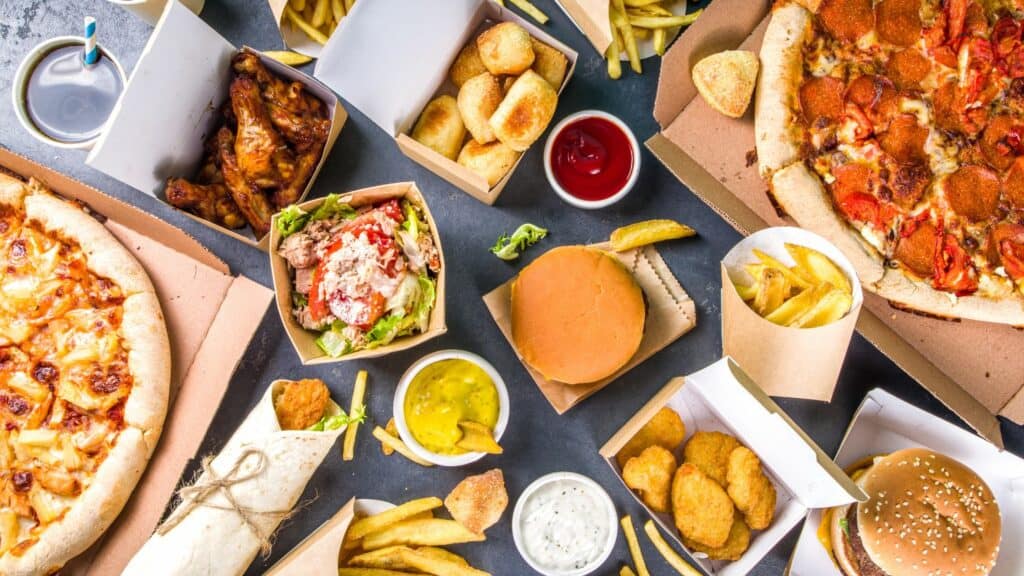A Deeper Look Into Edlong’s IFT First Fireside Chat
“Can Functional Foods Help You Overcome Biases Against Processed Foods?”
IFT first 2024 may be in the rearview mirror. Still, many important discussions from the various keynotes, fireside chats, and breakout sessions are sure to continue long after the showroom floor has emptied.
One category that seemed to garner considerable attention was the polarizing topic of Ultra-processed foods, or UPFs, particularly how the industry, regulators, and consumers should approach these products.
Unfortunately, this appears to be a subject with a lot of voices contributing to the noise but ultimately failing to connect in meaningful conversations.

This only adds to the already confusing landscape, leaving the consumers as the ones with the most to lose.
An increasing focus on healthier food options, and the rapid rise of functional and “Better-For-You” products, rather than making choices easier for shoppers, are coming into conflict with mainstream guidelines.
That’s why the question, “Can Functional Foods Help You Overcome Biases Against Processed Foods?” was what Edlong President Michael Natale and Global VP of R&D Dr. Bernd Koehler looked to explore in their fireside chat at the expo.
This two-part series aims to not simply recap the major points from the fireside chat, but take a detailed look at the struggles the NOVA classifications create for consumers, and how functional foods and flavors may be the key to shifting this discussion and the perception of UPFs.
Definitions Matter: Ultra-processed or Ultra-confusing?
In recent years, there has been no shortage of headlines warning of the alleged dangers of ultra-processed foods.
Whether this is simply a correlation or a contributing cause, many consumers have taken this sentiment seriously.
Recent research from the European Institute of Innovation and Technology (EIT) Food Consumer Observatory found that 65% of consumers believed UPFs were unhealthy and could lead to health problems later on. This survey of nearly 10,000 people across 17 European countries also found that a full two-thirds (67%) see such products as contributing to obesity, diabetes, and other lifestyle-related health issues.
This perception isn’t limited to Europe. A separate survey found that 57% of Americans also think that UPFs are bad for their health.
As damning as these stats may seem, digging deeper shows the reality to be much less precise.

In the European survey, an astounding 84% of people claim to eat UPFs fewer than five times a week, yet when pressed to identify which foods qualified, this number quickly becomes less impressive at best and points to a larger problem at worst.
For example, while six in ten consumers (61%) were able to identify energy drinks as ultra-processed, a mere 34% correctly identified vegan cheese, and even less, at 22%, labeled chocolate bars as UPFs.
This points to the possibility that consumers at large might fear the term “ultra-processed” more than the products themselves.
According to Dr. Koehler, the widespread proliferation of the NOVA classification system is a major contributor to our current situation.
NOVA – A Focus on the Wrong Things
Developed in 2009 by researchers from the University of Sao Paulo, Brazil, led by Dr. Carlos Augusto Monteiro, the NOVA framework created four categories that were used to classify all food products by their level of processing and, by extension, their alleged health implications.
The four categories are as follows:
1. Unprocessed or Minimally Processed Foods:
2. Processed Culinary Ingredients:
3. Processed Foods:
4. Ultra-Processed Foods (UPF):
(Click here to see further descriptions and examples of each category).
The simplicity and seemingly straightforward nature of this system have led it to be used as a tool for public health and nutrition policy and research worldwide.
Dr. Koehler sees this over-simplicity as muddying the waters for everyone, making it more difficult to communicate the information people actually need and care about.
As a result, foods that may be perfectly healthy, if not even the healthier option, become unnecessarily stigmatized, creating a bias for consumers.
Elaborating on these flaws during the fireside chat, he said, “[The problem with] this categorization is that it’s solely based on the level of processing these food products and ingredients are going through. This simplicity [is also] its greatest weakness. The classification is so focused on processing, but it doesn’t really include any of the nutrient content that is important when you think about healthier foods, healthier diets, etc.”
He continued, “It’s confusing, and the list of food examples for each category just keeps getting longer and longer. There are also gray areas in between those four NOVA categories that make it hard to really wrap your head around. But ultimately, the key problem is that there is a very limited data to support the claimed health impacts.

Though there have been epidemiological studies alleging negative health outcomes from eating Ultra-processed foods, these were all observational studies. The challenge with these studies is that they can only suggest associations. They cannot establish a clear cause-and-effect relationship between food consumption and the health outcome.
This stigmatizes [certain products] as negative just because of the level of processing. I think that’s not science-based; there is no solid evidence for that.”
Others around the industry and recent research continue to level similar scrutiny against these systems’ myopic focus on processing methods rather than what genuinely matters to people: quality and nutrition.
Dr. Koehler stressed, “The conversation should shift towards impactful innovations that are planet-friendly and help consumers live healthier lives. The NOVA classification doesn’t help in this regard. It could even hinder innovations in food technologies.”
One type of innovation that has enormous potential to foster healthier lifestyles for consumers is functional foods.
Check Part II to learn more about the pivotal role that these functional products can play in rewriting the narratives about ultra-processed foods.
Topics: Functional Foods
Resource Type: Article
Resource Region: US

